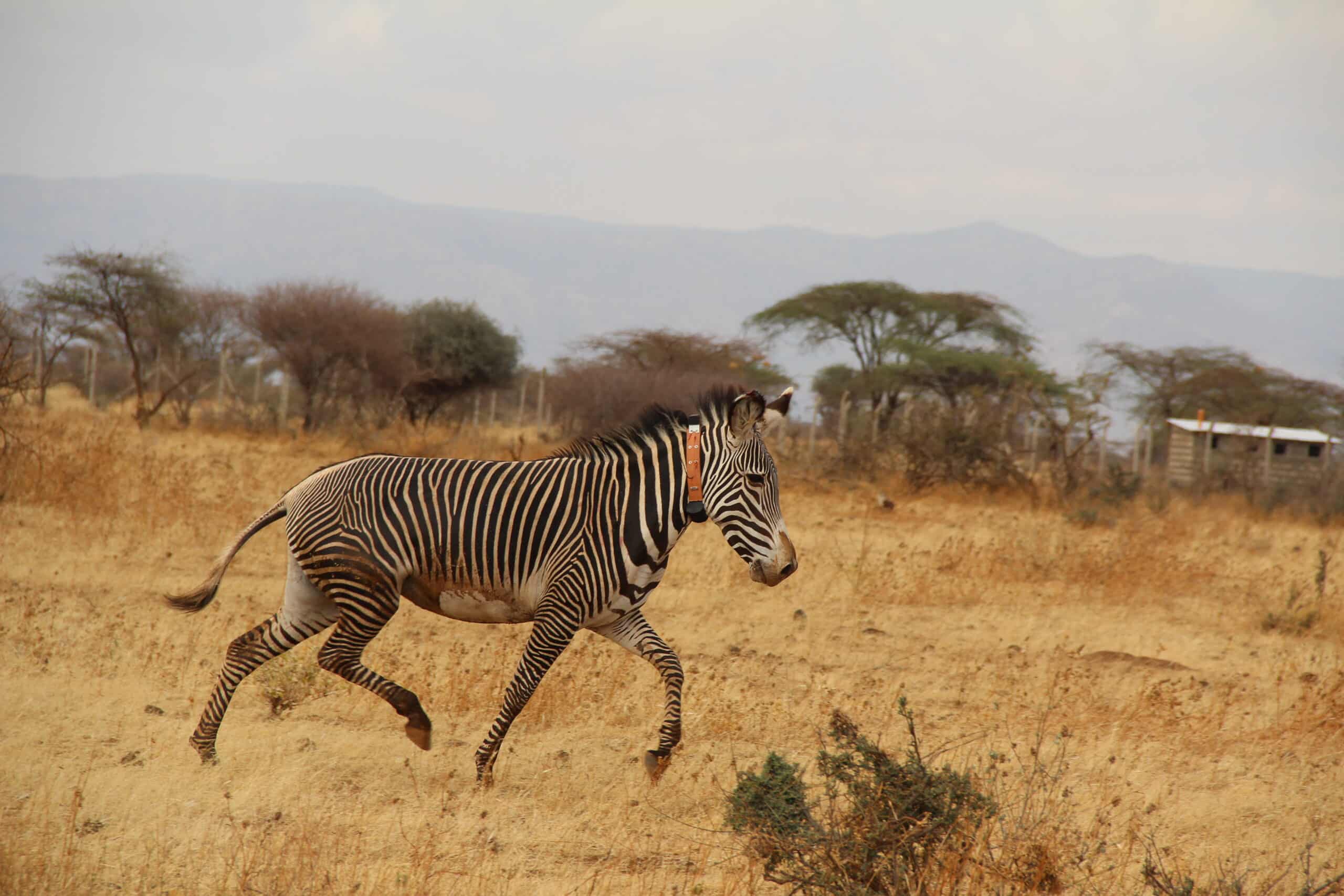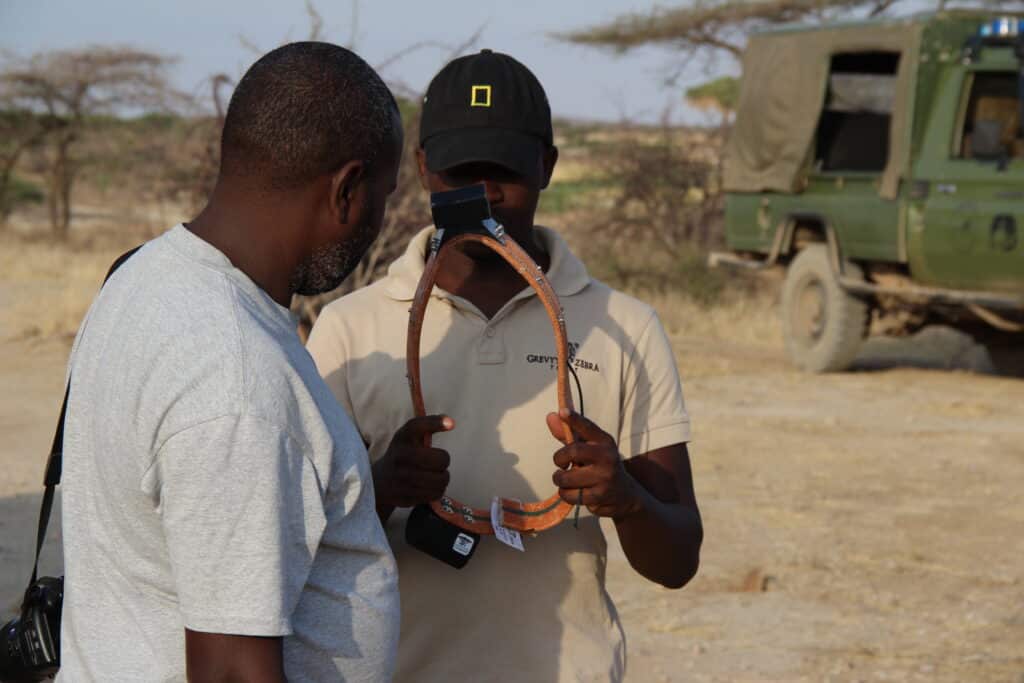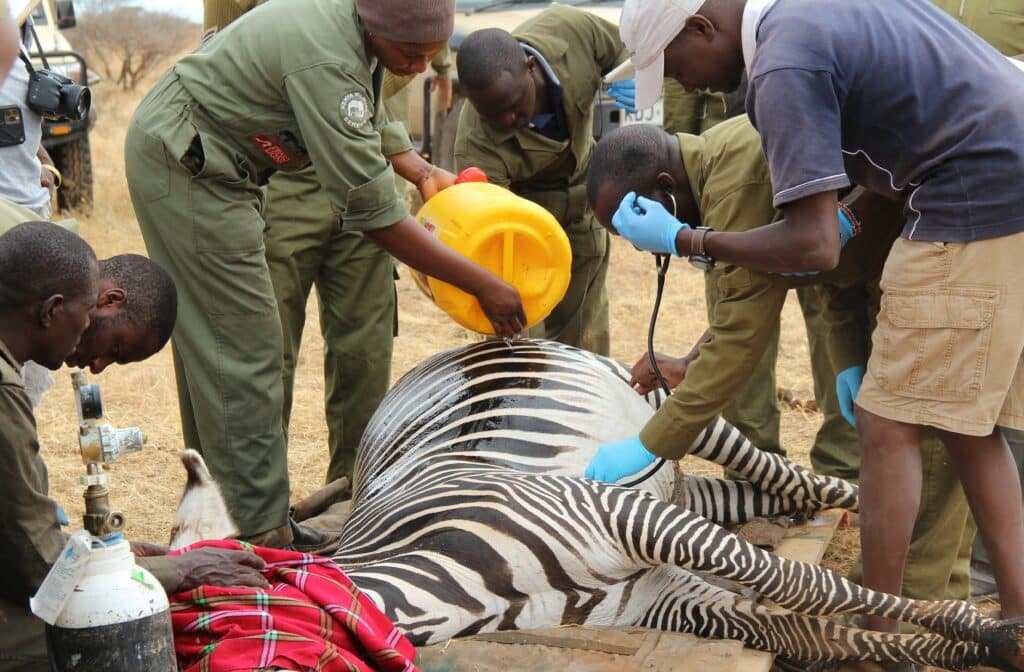We’re helping to safeguard the future of the world’s most endangered zebra
December 18, 2023
December 18, 2023

We’re helping to protect the world’s most endangered zebra ahead of a major infrastructure project that will cut across the heart of their habitat in Kenya.
Conservationists from Marwell Wildlife, who own and operate Marwell Zoo, are using GPS collars to monitor 20 Grevy’s zebra in Northern Kenya to collect data which will safeguard the future of the species.
The project, in collaboration with Kenya Wildlife Service and the Grevy’s Zebra Trust, will track the zebra for one year to find out how they move around their range.
Watch our video about the project on YouTube.
The data will be used to mitigate the threats to the species by informing planning and conservation management decisions. The Grevy’s zebra is one of the rarest equids in the world and today can only be found in northern Kenya and isolated groups in Ethiopia.
Plans are underway to develop Eastern Africa’s most ambitious infrastructure project, which forms part of Kenya’s growth and development plan. Named the LAPSSET corridor (Lamu Port-South Sudan-Ethiopia Transport), the major development will bring together Kenya, Ethiopia and South Sudan and includes large infrastructure such as an oil pipeline, motorway and a railway, which will cut directly across core Grevy’s zebra range in northern Kenya, potentially splitting the population. These infrastructure projects are recognised as one of the greatest emerging threats to the Grevy’s zebra population in Kenya.

Professor Philip Riordan, Marwell Wildlife’s Director of Conservation, said: “The Grevy’s zebra is one of the most endangered mammals in the world and Kenya is the last stronghold for this species with less than 3000 animals remaining. We’re working with our colleagues to ensure we have as much knowledge about Grevy’s zebra, particularly given the amount of infrastructure and development across the region that might affect the animals. By collaring them, we hope to gain more insights that can inform not just our conservation work but the mitigations that we might advise being put in place to ensure this species has a future.”
A collaring team was put together and included experts from Kenya Wildlife Service, Wildlife Research and Training Institute, Marwell Wildlife and Grevy’s Zebra Trust. They started at daybreak each day and finished before 11am when temperatures became too high, and risky for the animals’ recovery after sedation.
Each member was assigned a role so the animal was down for the minimum time, less than 10 minutes. Firstly, the vets would check over the zebra before fitting each collar while others would photograph the Grevy’s unique stripe pattern, hooves and teeth. In just eight days, 18 animals were collared in the Samburu region and two in the El Barta area, where little is known about Grevy’s zebra movements.

Tanya Langenhorst, senior conservation biologist at Marwell, explained: “We also took this opportunity to collect as many biometrical data as possible; blood and faecal samples, body temperature and measurements of body parts so we can learn more about this amazing species.
“Grevy’s Zebra Trust and Marwell are using the EarthRanger (ER) platform to visualise the almost real time movement of the Grevy’s zebra. We’ll be able to identify which habitats are critical for Grevy’s zebra distribution, dispersal and movement, and why these areas are important. Our findings will be reported to Kenya Wildlife Service and the LAPSSET planners, so that mitigating measures such as over and under-passes can be implemented where most suitable. Our thanks to our partners and Kolmården Foundation for funding this project.”
Hampshire-based conservation charity Marwell Wildlife was instrumental in helping to create a national conservation strategy for Grevy’s zebra in Kenya and is one of the founding members of the Grevy’s Zebra Technical Committee, which guides and implements conservation action.
Marwell’s work includes extensive surveys and monitoring of Grevy’s zebras to understand changes in their populations and distribution.
Marwell manages the International Studbook and the European Ex situ Programme (EEP) for Grevy’s zebra and has a dedicated Kenyan team who work to conserve this rare species.